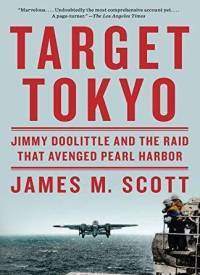In December 1941, as American forces tallied the dead at Pearl Harbor, President Franklin Roosevelt gathered with his senior military counselors to plan an ambitious counterstrike against the heart of the Japanese Empire: Tokyo. Four months later, on April 18, 1942, sixteen U.S. Army bombers under the command of daredevil pilot Jimmy Doolittle lifted off from the deck of the USS Hornet on a one-way mission to pummel the enemy’s factories, refineries, and dockyards and then escape to Free China.
For Roosevelt, the raid was a propaganda victory, a potent salve to heal a wounded nation. In Japan, outraged over the deaths of innocent civilians―including children―military leaders launched an ill-fated attempt to seize Midway that would turn the tide of the war. But it was the Chinese who suffered the worst, victims of a retaliatory campaign by the Japanese Army that claimed an estimated 250,000 lives and saw families drowned in wells, entire towns burned, and communities devastated by bacteriological warfare.
At the center of this incredible story is Doolittle, the son of an Alaskan gold prospector, a former boxer, and brilliant engineer who earned his doctorate from MIT. Other fascinating characters populate this gripping narrative, including Chiang Kai-shek, Lieutenant General Joseph “Vinegar Joe” Stilwell, and the feisty Vice Admiral William “Bull” Halsey Jr. Here, too, are indelible portraits of the young pilots, navigators, and bombardiers, many of them little more than teenagers, who raised their hands to volunteer for a mission from which few expected to return.
Most of the bombers ran out of fuel and crashed. Captured raiders suffered torture and starvation in Japan’s notorious POW camps. Others faced a harrowing escape across China―via boat, rickshaw, and foot―with the Japanese Army in pursuit.




